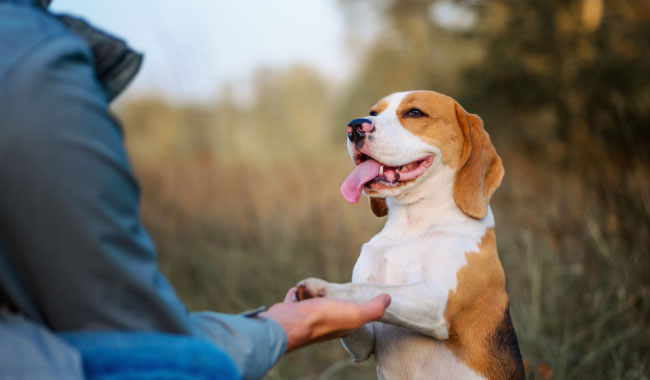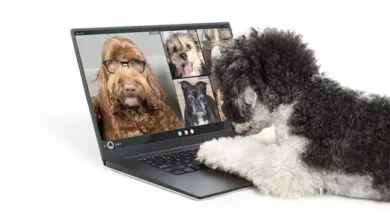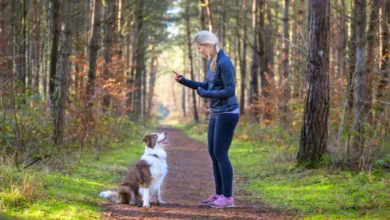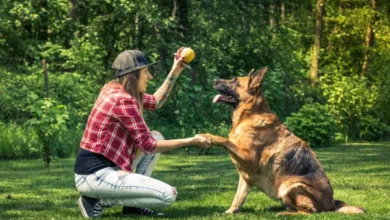
Your dog is a part of the family. They deserve to be treated like one – with love, care, and training. But what do you do if your pup just isn’t getting it? For many people, this is an all-too-common problem.

The most common issue that arises in dog owners’ homes is concern about housebreaking their dogs. There are plenty of solutions out there for any kind of concern when it comes to raising a puppy or adult dog – but which ones work best?
Read More:
- Bringing Home a New Puppy: Preparing Tips and First Steps
- Estate Planning and Pet Care: Everything You Need to Know
- How Do Dogs Communicate With Humans
- How to Train Your Dog to Play Nice With Children and Babies
- 4 Tips for Getting Your Dog on a Good Schedule
We’ve compiled some tips in this article on how to train your canine companion below for you. Hopefully, these will help make housetraining easier than ever before! So, read on to learn more!
#1. Find a Great Training Program
We understand that every dog-owner has different needs and expectations. That’s why we recommend you shop around for a training program out there that will work best for you and your dog. Look for books, blog posts, videos, eBooks – anything! Search online to see what kinds of options are available. This way, you won’t feel limited with what you can do to train your dog. In addition, you can also find a dog trainer who will work with you and your pet to nip any bad behavior in the bud. You should find a trainer who is licensed, experienced, and nearby so that they can meet with you whenever is most convenient. Also, as seen at www.braintrainingfordogs.promo, your chosen trainer should use scientifically proven methods that are effective. These can include but are not limited to positive reinforcement, clicker training, and dog sports. You might also want to ask your vet or other experienced dog owners for a referral as well!
#2. Begin Your Training Immediately
The longer you wait to train your dog, the more ingrained their bad habits will become. That’s why it’s so important to begin training right away, as soon as you bring your puppy home! Start by teaching simple behaviors like “sit” and “stay.” Then work your way up to more complex skills like housetraining. Soon enough, your dog will be trained! However, it is important to mention that dogs aren’t born with the knowledge of English or any other human language. That’s why many experts suggest you use positive reinforcement while training.
#3. Puppy-Proof Your Home
Before you can even begin training your dog, it’s important that you make sure your home is puppy-proof. This means taking the time to ensure that each of your house’s rooms is safe from hazards like electrical cords, chemicals, and more. In addition, you should also look out for items like stools, chairs, and tables. Dogs can easily knock these items over, leading to accidents or injuries. They can also easily chew on these items, which may lead to health problems. So before you begin training, make sure you’ve taken the time to puppy-proof your home. Start with the main living areas, and then move on to the rooms that you don’t use as much.
#4. Learn Your Dog’s Body Language
Body language is crucial for dogs, as it gives humans hints about their behavior. For example, when a dog tucks its tail between its legs and runs away, chances are they’re feeling scared or intimidated. This is a sign that you should give them space and avoid trying to pick them up. But when a dog’s tail wags in a circular fashion while their ears perk up, it often means they’re friendly and ready for attention. Besides their tail and ears, you should also watch their body position. For example, when a dog’s body is low to the ground, and they’re slinking away from you, chances are they’re feeling nervous or frightened. That’s why it’s important to look out for cues like these while training your pet!
#5. Reinforce Good Behaviors
Whenever your dog performs good behavior, it’s essential to reward them with verbal praise and affection. You can use phrases like “yes!” and “good boy/girl” as well as physical affection like a scratch behind the ear or a pat on the head. You can also give them a treat, but this should only be done occasionally. In addition, whenever they do something you’re not pleased with, it’s vital to never reward them with either verbal praise or affection. If they keep jumping on you during greetings, for instance, then avoid petting them to show your discontent. Instead, tell them “no” in a firm voice and then give them a treat when they’re calm.
#6. Be Consistent
Being consistent with your dog training is probably the most important thing you can do. This means being strict when it comes to reinforcement, so always provide them with praise or affection every time they do something good. It also means avoiding rewarding bad behavior, which can sometimes be challenging. For instance, let’s say your dog keeps jumping on you while waiting for their meal. While it might be tempting to give the pup some extra treats while you prepare their food, you should avoid doing so! If you allow them to jump on you for attention while waiting, then they’ll think it’s okay to do it during meals as well.
#7. Keep It Simple
Many dog training plans are simply too complex – and at times, they’re just plain unnecessary. When teaching your pet new tricks, keep things simple by focusing on just one command at a time. You should also avoid using too many words or phrases, as this can confuse your pup. For instance, if you’re trying to train them not to jump on people during greetings, then telling them “no” will be enough. You should never combine other commands like “down” and “stop.”
The key to successful dog training is consistency and simplicity. It’s crucial that you reinforce good behavior with verbal praise or affection, as well as avoid rewarding destructive behaviors such as jumping on people during greetings by telling them “no” in a firm voice and then giving them a treat when they’re calm. You should also look for some training programs. By doing so, you’ll ensure a stress-free experience for both you and your dog!



